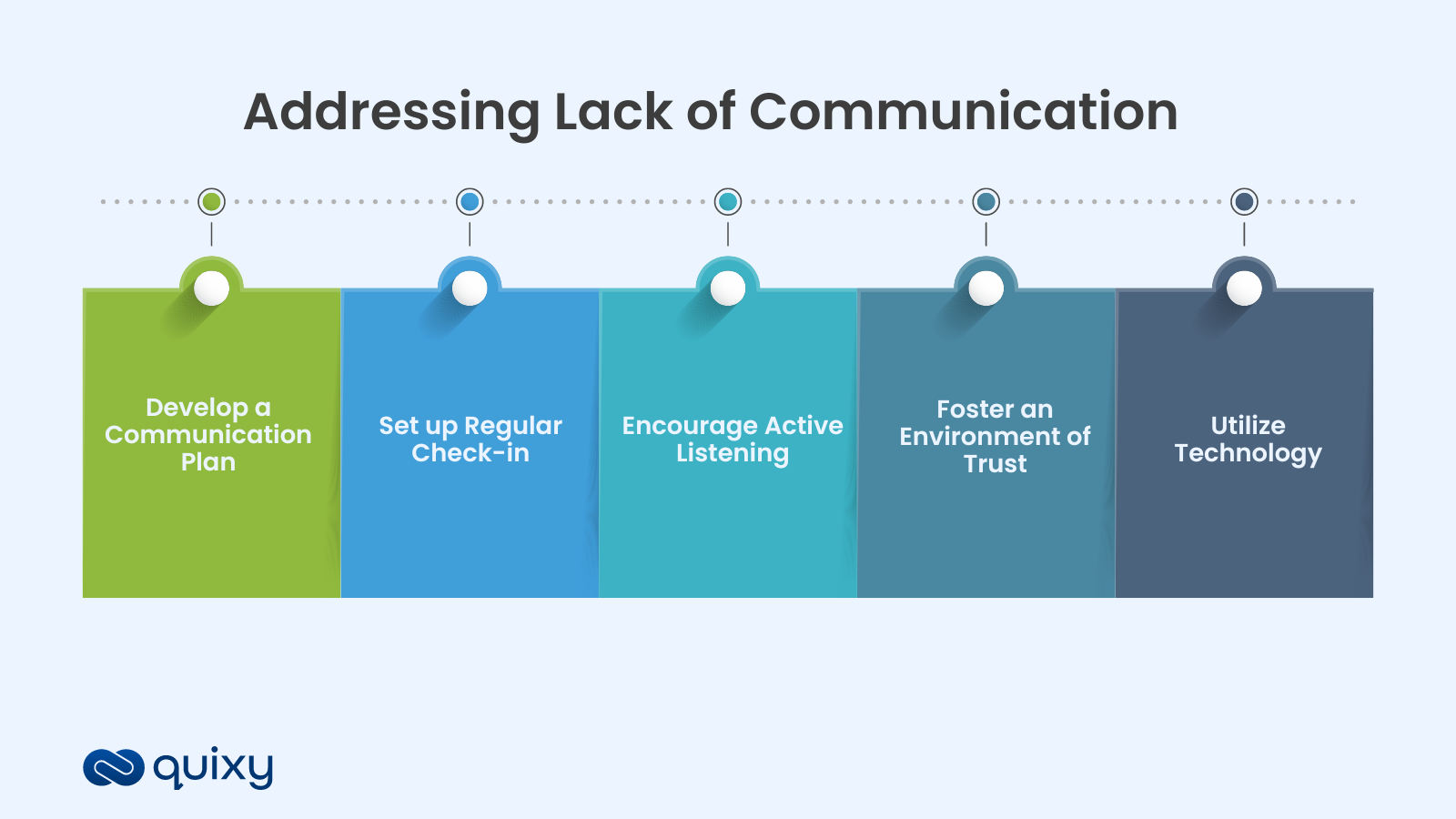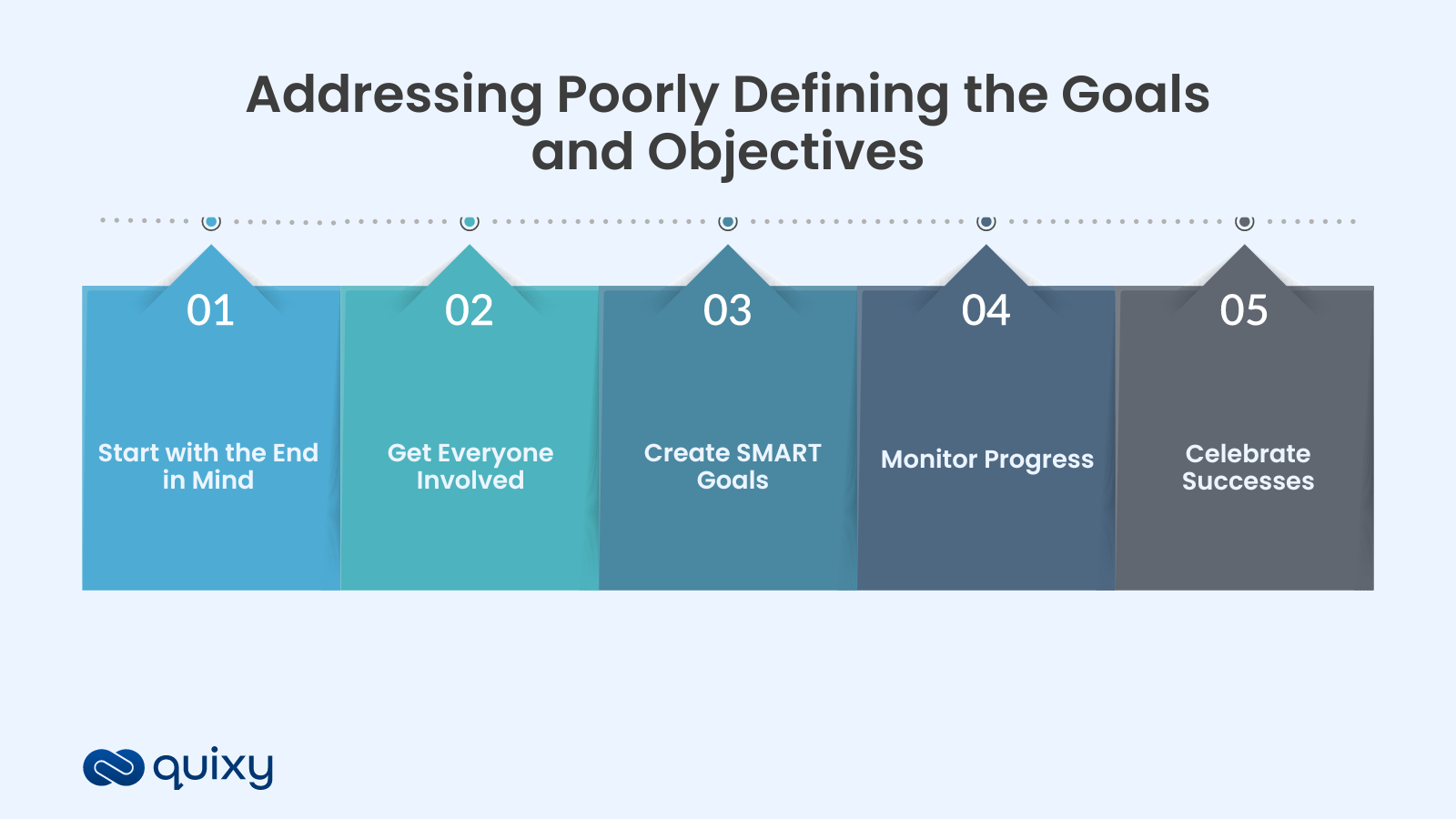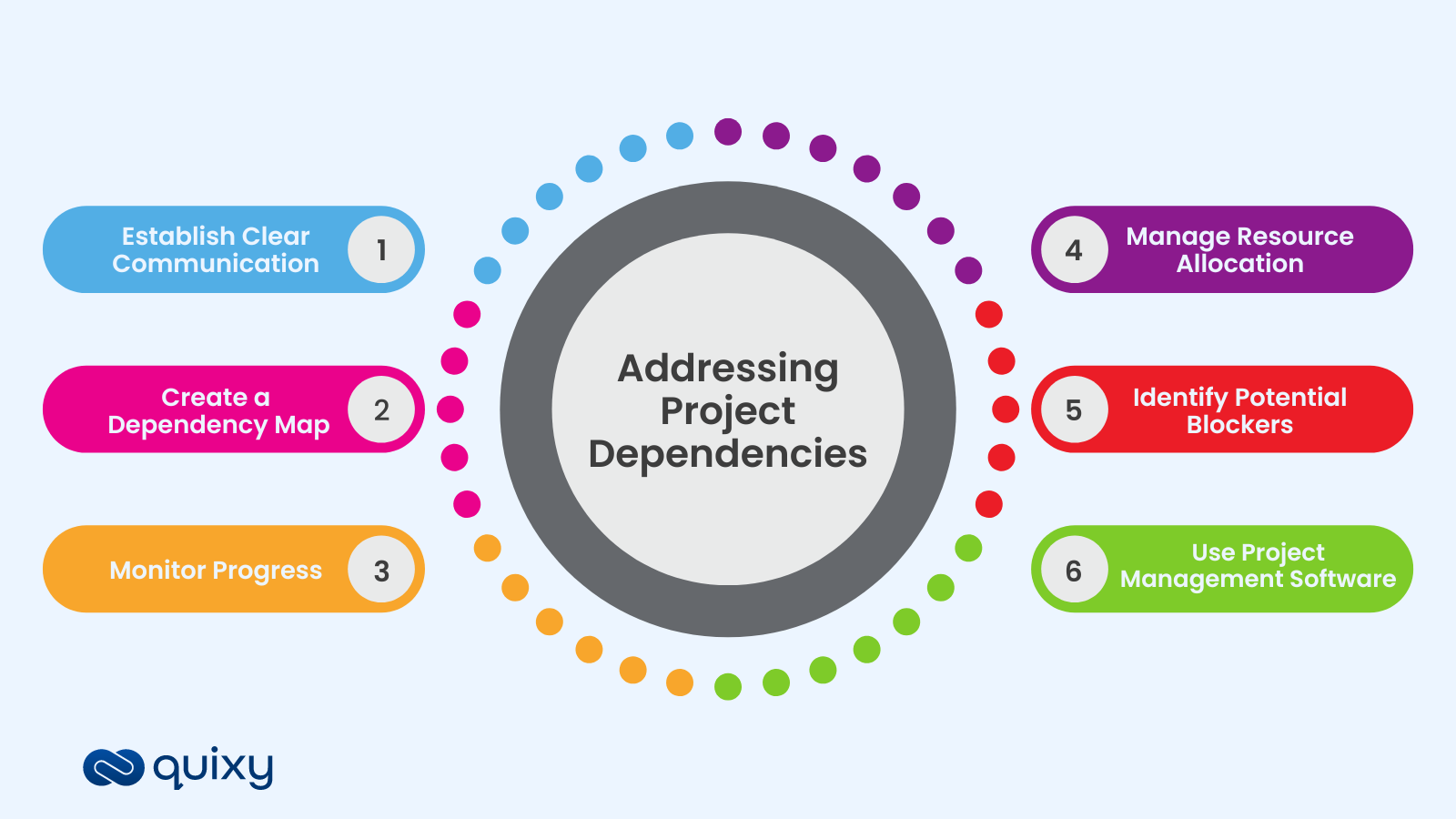
Are you a project manager looking to improve your team’s workflow through project management hacks? Do you need help with the number of tasks and deadlines you must keep track of? Don’t worry. We’ve got you covered!
Top 10 Project Management Challenges
Navigating the dynamic landscape of project management comes with its own set of trials, demanding adept problem-solving and strategic finesse. In “Mastering Top 10 Project Management Challenges: Expert Strategies for Success,” we delve into the core challenges that project managers encounter and unveil seasoned strategies to conquer them. From handling shifting project scopes to orchestrating seamless communication, this guide equips you with the insights to steer projects towards success, ensuring your mastery in the face of complexities.
Challenge No. 1: Lack of Communication
Lack of Communication is one of the most common issues in project management. Communication can lead to a lack of clarity and conflicts that can derail a project and make it difficult to complete. Managers facing this challenge encounter misinterpretation, miscommunication, misunderstanding and “who is what” problems.
Here’s how to address it:

1. Develop an effective communication plan
Clearly define how and when team members should communicate with each other, including the preferred channels and methods for communication.
2. Set up regular check-ins
Schedule regular meetings or check-ins with the team to ensure smooth communication, discuss progress and identify any areas for improvement.
3. Encourage active listening
Make sure team members listen to each other’s ideas and perspectives before forming opinions or making decisions.
4. Foster an environment of trust
Make sure everyone feels comfortable speaking up and sharing their ideas without fear of judgment or criticism.
5. Utilize technology
Use project management tools such as video conferencing, instant messaging apps, and online collaboration platforms to facilitate real-time communication with remote teams.
By addressing the lack of communication early on, project managers can ensure their projects run smoothly and efficiently with minimal disruption.
Also Read: Revamp Project Management with No-Code
Challenge No. 2: Lack of Clear Goals & Alignment With Objectives
Poor planning and strategising lead to a lack of setting up clear goals and misalignment with the business objectives. This, in turn, leads to poor performance by the team members as they are unaware of aligning their objectives with the company’s.
Here’s how to address it:
1. Defining the Goals and Objectives
Defining project goals and objectives is essential. Without a clear understanding of what needs to be accomplished, it can be difficult for a project to reach its objectives.
2. Clear Expectations
Setting expectations for the project team and stakeholders is essential. This will help ensure everyone is on the same page and working towards the same goal.
3. Set Clear Goals and Objectives
Measuring success or failure throughout the project life cycle can be difficult without clear goals and objectives.
4. Strong Leadership
A strong leader who can drive the project forward is essential for success. A leader should be able to provide direction, set expectations, and manage resources effectively.
5. Decision-Making
Poor decision-making can lead to project delays or failure. Project managers need to be able to weigh all the options before making decisions to ensure the best outcome is achieved.
6. Managing Project Dependencies
One of the biggest challenges for project managers is managing project dependencies, such as external resources or other projects that impact their current one. Project managers need to consider these dependencies to stay on schedule and budget.
7. Choices and Decisions
Poor decisions can lead to costly mistakes derailing a project from reaching its objectives. Project managers must ensure they have all the necessary information before making decisions to avoid expensive errors or delays in the project’s completion date.
Also Read: Project Management Simplified for Non-Project Managers
Challenge No. 3: Poorly Defining the Goals and Objectives
Poorly Defining the Goals and Objectives can be a significant challenge in project management. The lack of clarity can lead to confusion among team members, resulting in project delays, budget overruns, and, ultimately, failure.
Here’s how to address it:

1. Start with the End in Mind
Begin by defining the desired outcome for the project, then work backwards to determine the necessary steps to get there.
2. Get Everyone Involved
Make sure everyone on the project team is involved in defining the goals and objectives. This ensures everyone is on the same page and understands their roles and responsibilities.
3. Create SMART Goals
SMART is an acronym for Specific, Measurable, Achievable, Relevant, and Time-bound goals. Creating SMART goals helps ensure that everyone understands what needs to be accomplished.
4. Monitor Progress
Regularly monitor progress towards completing the goal and objectives to ensure that nothing is slipping through the cracks or falling behind schedule.
5. Celebrate Successes
Make sure to celebrate successes along the way! Acknowledging progress towards a goal helps keep team morale high and encourages continued success throughout the project.
Challenge No. 4: Scope Creep
Scope creep one of the most common project management challenges managers face. It occurs when the size of a project is not defined correctly or when the project’s scope changes during its execution. This can lead to delays, budget overruns, and an overall decrease in quality.
Here’s how to address it:
1. Define the project’s scope in detail, including specific timelines and budgets.
2. Set expectations with all stakeholders and make sure everyone understands their roles and responsibilities.
3. Regularly communicate with stakeholders about any changes or additions to the project’s scope.
4. Monitor progress regularly and track changes to ensure any new requirements are accounted for in the budget or timeline.
5. Create a change control process that requires approval from all stakeholders before any changes are made to the project’s scope.
6. Take proactive steps to minimize scope creep by regularly meeting stakeholders to discuss potential changes before they become a reality.
7. Establish clear guidelines for managing and communicating changes throughout the project life cycle.
Also Read: How Businesses can Supercharge Project Management with No-Code Apps
Challenge No.5: Unclear Expectations
Unclear Expectations are an all-too-common project management challenge, as they can lead to delays and unmet deadlines. Everyone involved in the project must be on the same page to ensure success.
Here’s how to address it:
1. Clearly outline expectations from the start
Before beginning a project, ensure everyone understands what is expected from each team member. This includes deadlines, deliverables, and any other requirements.
2. Establish progress checkpoints
Regularly check in with the team to ensure that expectations are met, and progress is made. This will help catch any issues early on and allow everyone to make necessary adjustments.
3. Involve stakeholders in decisions
Inviting stakeholders to provide input and feedback can help ensure that expectations are aligned with business objectives. This will also help build trust and create a sense of ownership among all involved parties.
4. Create a timeline
Create a timeline for the project and share it with everyone involved. This will help keep everyone on track and ensure all expectations are met on time.
5. Monitor team members’ performance
Monitoring performance throughout the project ensures that goals, objectives, and expectations are met and potential issues can be addressed quickly.

Also Read: Master Project Planning
Challenge No.6: Failure to Set Clear Goals and Objectives
Failure to set clear goals and objectives is one of the most common project management challenges. Without well-defined objectives, measuring success or failure, tracking progress, and making necessary adjustments is impossible. It’s essential to clearly understand what needs to be accomplished, when, and how.
Here’s how to address it:
• Establish a common goal and help your team members work toward it.
• Identify success criteria that define the parameters of success.
• Break larger goals down into smaller tasks.
• Set realistic deadlines for each task.
• Make sure everyone on the team understands their roles and responsibilities with the goal.
• Reevaluate the goal as needed if circumstances change.
• Celebrate milestones that demonstrate progress toward the goal.
Challenge No.7: Lack of Leadership
Lack of leadership is one of the most common challenges project managers face. Without solid leadership, teams may become misaligned and unable to reach their goals. Poor decision-making is often a result of a lack of leadership, leading to project choices and decisions that do not align with business objectives.
Here’s how to address it:
Project managers can address this challenge by developing a clear set of goals and objectives for the project and an action plan for achieving those goals. Developing an effective communication plan to ensure the team is on the same page is also essential.
Leadership should also be proactive in their approach to problem-solving. When project issues arise, they should be addressed quickly and effectively, and this will help keep projects on track and ensure they are completed on time and within budget.
Lastly, strong leaders need to be able to delegate tasks effectively so that each team member can contribute in a meaningful way to the success of the project. By assigning tasks aligning with each team member’s skillset, project managers can ensure that the team works together efficiently and effectively towards the same goal.
Challenge No.8: Lack of Decision-Making
Lack of decision-making is a huge project management challenge. It is the leading cause of lousy project choices and decisions and can negatively impact project success. According to PMI, it causes a significant delay or budget overrun in 50% of all projects. Project managers must take charge of the decision-making process and set clear goals and expectations to avoid this problem.
How to address this problem:
To do this, project managers should regularly monitor employee performances, establish clear procedures for decision-making, and provide feedback to employees on their decision-making processes. This will ensure that everyone involved in the project works together to make the best decisions possible. By doing this, project managers can ensure their projects are successful and positively impact the company.
Challenge No.9: Managing Project Dependencies
Managing Project Dependencies is one of the most challenging aspects of project management, and it involves recognizing and understanding the dependencies between different tasks or processes and adequately addressing them.
Here’s how to address it:

1. Establish Clear Communication
Clear communication is essential for managing project dependencies. All team members should be aware of the dependencies between tasks and processes and any changes in scope or objectives that could impact them.
2. Create a Dependency Map
Creating a dependency map can help project managers better visualize the relationships between tasks and processes, making it easier to identify potential problems and develop more effective solutions.
3. Monitor Progress
Monitoring progress is integral to managing project dependencies. It allows project team managers to stay on top of potential problems before they become too challenging to resolve.
4. Manage Resource Allocation
Resource allocation is critical for managing project dependencies, as it ensures that all necessary resources are available when needed.
5. Identify Potential Blockers
Identifying them is another critical step in managing project dependencies, as they can cause delays and other problems if not addressed on time.
6. Use Project Management Software
Project management software can be invaluable for managing project dependencies. It can track progress and provide real-time alerts about potential issues or changes in scope or objectives.
By following these strategies, project managers can better manage their projects and promptly identify and address all dependencies.
Challenge No.10: Making Poor Choices and Decisions
Making poor choices and decisions is one of the most common project management challenges. It results from a lack of leadership, leading to bad decision-making. Poor decision-making can have a significant impact on the success of a project and can lead to costly errors.
Here’s how to address it:
To address this challenge, it’s essential to set clear goals, objectives, and expectations at the outset and ensure that everyone involved in the project clearly understands what needs to be done. Additionally, having an experienced project manager with strong leadership skills can help ensure that the right decisions are made.
How No-Code Tools Conquer Project Management Challenges
When it comes to conquering project management challenges, embracing innovative solutions is key. After diving into the core challenges project managers face, let’s shift our focus to the future of project management. Enter the game-changer: no-code tools. These digital superheroes are not only reshaping app development but also rewriting the rules of project management.
Imagine effortlessly creating customized apps that tackle communication hurdles, monitor progress, and juggle resources like a pro. Picture real-time collaboration platforms that make teamwork a breeze and interactive dashboards that unveil project insights at a glance. With no-code tools in your corner, adapting to shifting project scopes becomes a piece of cake, and keeping everyone in the loop is as easy as a click.
But that’s not all – these tools are the secret sauce for agile adjustments to project plans, giving you the power to pivot and adapt at lightning speed. Say goodbye to the headaches of traditional project management and embrace the dynamic world of no-code tools. Your projects will thank you – and so will your sanity! So, let’s explore how these innovative tools can help you sail through challenges and chart a course for project management success.
Quixy: Your Go-To Project Management Software
Quixy is a powerful no-code platform that empowers you to create custom project management solutions tailored to your specific needs. You can avail project management’s full potential with Quixy’s powerful suite of tools designed to streamline workflows, enhance collaboration, and boost productivity.
Snap2App: Build Apps from Screenshots or Sketches
Turn your project ideas into fully functional apps in minutes. Snap a screenshot or sketch, and Snap2App instantly creates the app framework, speeding up the development process.
Document Parser: Extract and Organize Data
Effortlessly extract critical data from various document formats. Document Parser automates data extraction, reducing manual entry and enabling you to focus on high-priority tasks.
Text Extraction Toolbox: Capture Content with Ease
No need to retype or manually input text from images, videos, or websites. Quixy’s Text Extraction Toolbox helps you pull relevant information directly, saving time and effort.
Facial Recognition: Secure and Personalized Access
Use cutting-edge facial recognition technology to secure project data and personalize user experiences, ensuring access control and confidentiality for your team.
App-Specific Integrations: Connect Your Favorite Tools
Easily integrate Quixy with your most-used project management tools, making data transfers seamless and keeping all your work connected for smoother collaboration.
Offline Mobile Apps: Stay Productive Anywhere
Quixy’s offline mobile apps allow you to continue managing your projects on the go, even without an internet connection. Update tasks, track progress, and access key data anytime, anywhere.
Thematic Forms: Create Visually Engaging Forms
Design forms that are not only functional but visually appealing. Thematic forms allow you to collect feedback, gather project data, or conduct surveys in style.
DigiLocker Integration: Secure Document Storage
Keep all essential project documents safely stored and easily accessible with DigiLocker integration. Ensure secure management of contracts, plans, and reports.
QR Code Scanner: Quick Data Capture
Need to capture data quickly? Use the QR Code Scanner to instantly input information, speeding up data collection and improving efficiency in project workflows.
Quixy Sandbox: Innovate and Test Safely
Experiment with new project ideas in a secure environment using Quixy’s Sandbox feature. Test features and functionalities without affecting live projects.
Digital Signature: Fast and Secure Approvals
Easily approve contracts, project documents, or proposals with Quixy’s Digital Signature feature, which ensures secure and legally compliant authorizations.
MFA: Multi-Factor Authentication for Extra Security
Protect your project data with Multi-Factor Authentication (MFA), adding an extra layer of security beyond standard passwords.
SSO: Simplify Access with Single Sign-On
Streamline logins for your project management tools by enabling Single Sign-On (SSO). Use a single set of credentials to access multiple tools, saving time and reducing password fatigue.
Conclusion
Project management can be complex and challenging, but it doesn’t have to be. With the right preparation, managers can anticipate and address the most common project management challenges. Project managers can ensure success by setting clear goals and objectives, creating a realistic timeline, communicating effectively with stakeholders and team members, and managing dependencies. It’s important to remember that every project is different and that what works for one may not work for another. However, project managers can successfully navigate the most challenging projects with the right strategies, goals, and objectives. Ready to transform your project management? Get started now and experience the power of automation and app creation, all without the need for coding skills.
Frequently Asked Questions (FAQs)
Q. What are common challenges in project management?
Project managers often grapple with scope creep, resource constraints, and unclear goals. Balancing priorities, managing team dynamics, and maintaining stakeholder alignment can also be challenging.
Q. How do managers handle changing project requirements?
Agile methodologies enable project managers to adapt swiftly to changes. Regular communication, stakeholder involvement, and prioritization help manage evolving requirements effectively.
Q. What Strategies are effective for communication among teams & stakeholders?
Clear channels, regular updates, and open feedback loops foster transparent communication, aligning all parties and minimizing misunderstandings.
Q. Balancing resource allocation and meeting project deadlines?
Resource management tools, capacity planning, and realistic scheduling empower managers to allocate resources optimally, optimizing timelines and minimizing bottlenecks.
Q. Approaches to mitigate risks & handle unexpected obstacles?
A proactive risk assessment, contingency plans, and agile problem-solving allow managers to navigate unforeseen challenges, ensuring minimal disruptions and successful project outcomes.
Subscribe
Login
Please login to comment
0 Comments
Oldest















